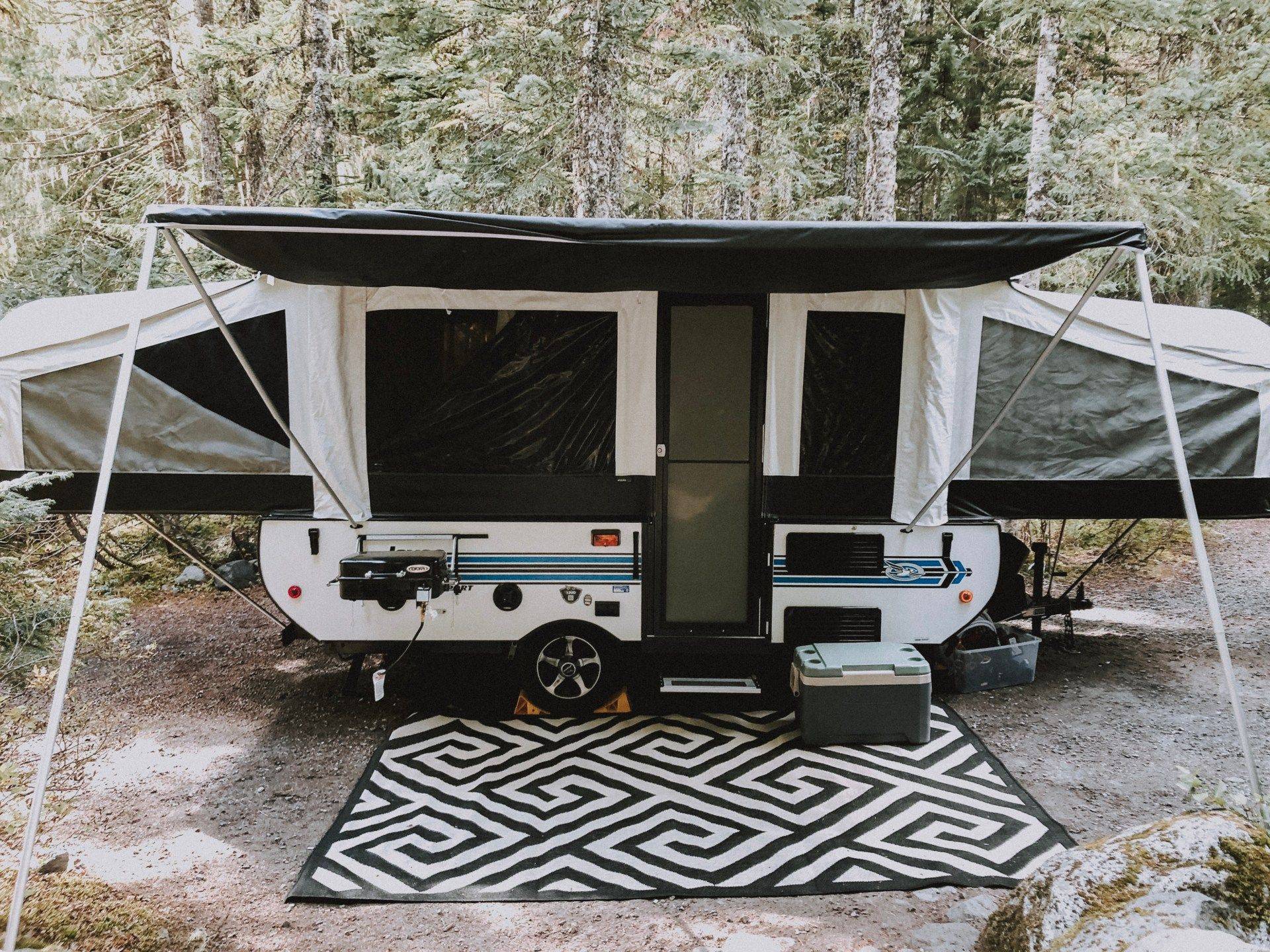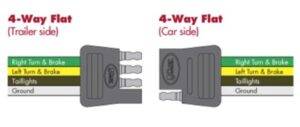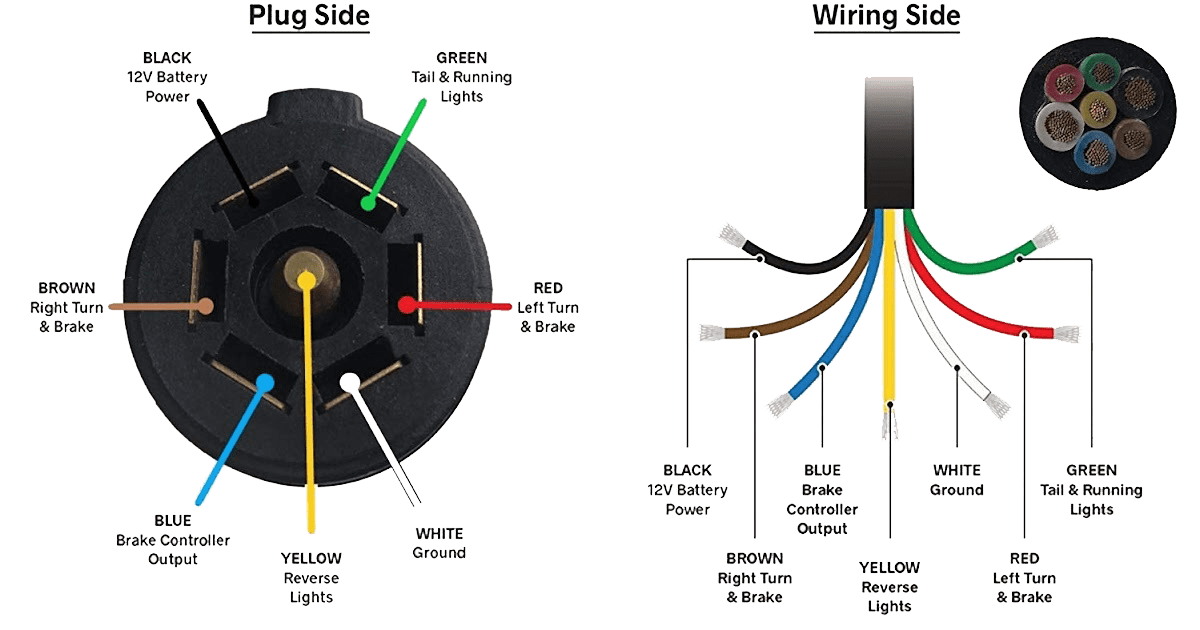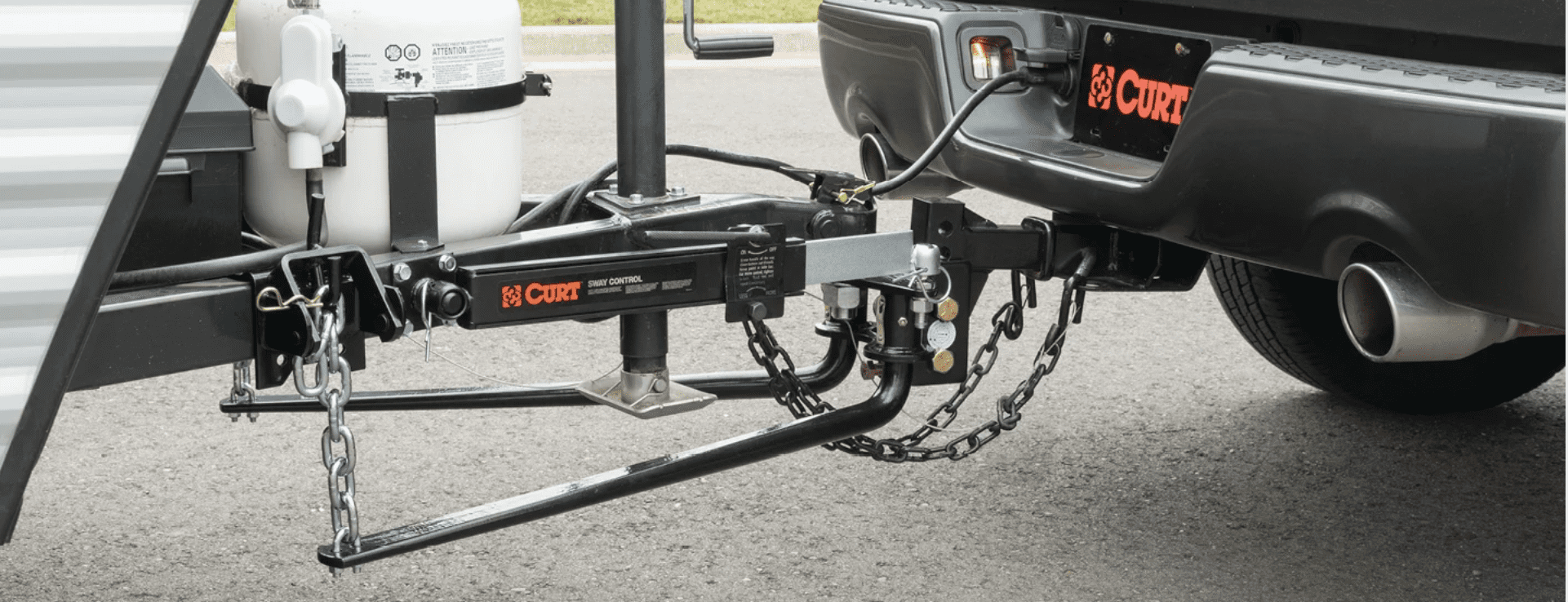TRAILER BRAKE CONTROLLER INFORMATION
SOUTHEAST ARIZONA RV RENTALS
azrvrentals@msn.com and Password Motorhome 101” in order to utilize this guide.
Click to See that your Truck/SUV is capable of TowingYOU CAN RENT FROM US AN ALTERNITIVE TO INSTALLING A BRAKE CONTROLLER
Pop Up Tents ~ Flat 4 wiring code

white ground
yellow left turn/brake light
green right turn/brake light
brown tail
Factory installed wiring harnesses frequently match the flat 4 colors.

ALL OUR TRAVEL & UTILITY TRAILERS UTILIZE THE 7 PIN ROUND TYPE OF ELECTRICAL CONNECTION

Our trailers come wired with a plug like this

Your vehcle MUST have this type of electrical connector
7 Way RV Connector
Pictured above & below is the Pollak (also known as the Bargman) 7 way trailer connector. This connector style is most commonly use on RV trailers and is also popular on horse and utility trailers. This connector is also manufactured by Bargman Company and there are also some generics around. They are supposed to be interchangeable. Wiring color code is maintained among the various brands. Per the illustration below the back side of the connector body is labeled at each terminal with the function assigned to that pin.
On the tow vehicle side, pickups and SUV’s with factory installed trailer wiring, wire color alone should not be relied on. Always test and match the function to the appropriate terminal.
On the trailer side RV’s for the most part are wired to match the connector colors.
It should be noted below that the center terminal is labeled as an auxiliary circuit. Most commonly used for backup lights not a ground terminal as many try to make it.
Also after the connector diagrams find more information on wire colors used by GM, Ford, and Dodge.
Wiring Code 7 way TRUCK /Car End
NOTE: #7 is the center terminal and currently is most commonly used for backup lights.
Wiring Code 7 way Trailer End
NOTE: #7 is the center terminal and currently is most commonly used for backup lights.

Typical Bumper Pull - Trailer Hitching
Wiring Diagram for Typical Brake Control Installation
Four wire connections are required for installation of a brake controller.Trailer feed (usually blue): This wire connects the brake controller to the 6-way or 7-way trailer connector at the back of the tow vehicle. Some vehicles with factory tow packages already have a wire for this connection. If your vehicle isn’t prewired. Run a wire from the brake connector location, under the vehicle, through the firewall, and to the brake controller. Most vehicles already have a pre-existing hole or grommet to get through the firewall. Furthermore, if your vehicle doesn’t have a pre-existing hole, you will have to drill.
Ground (usually white): This wire is connected from the brake controller to any reliable ground location.
Brake switch (usually red): This wire can be found at the switch at the top of the brake pedal. Usually more than 1 wire runs out from the switch, therefore you will have to test them to determine which wire has power when the brake pedal is depressed. Use a quick-splice connector to tap into this wire.
Battery power (usually black): This wire connects power from your tow vehicle’s battery to the brake controller. Vehicles with a factory tow package already have this wire run from under the dash to the battery. Hence a wire must be run through the firewall and connected directly to the battery with an in-line circuit breaker.
